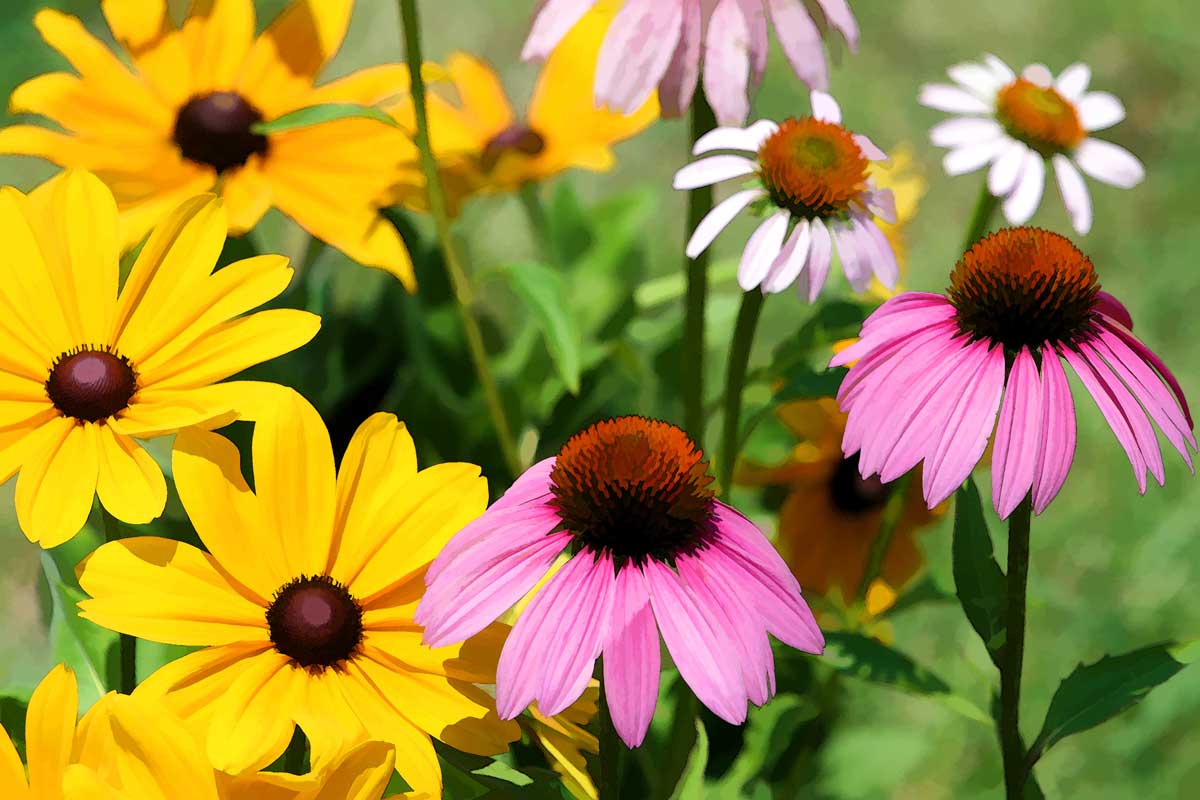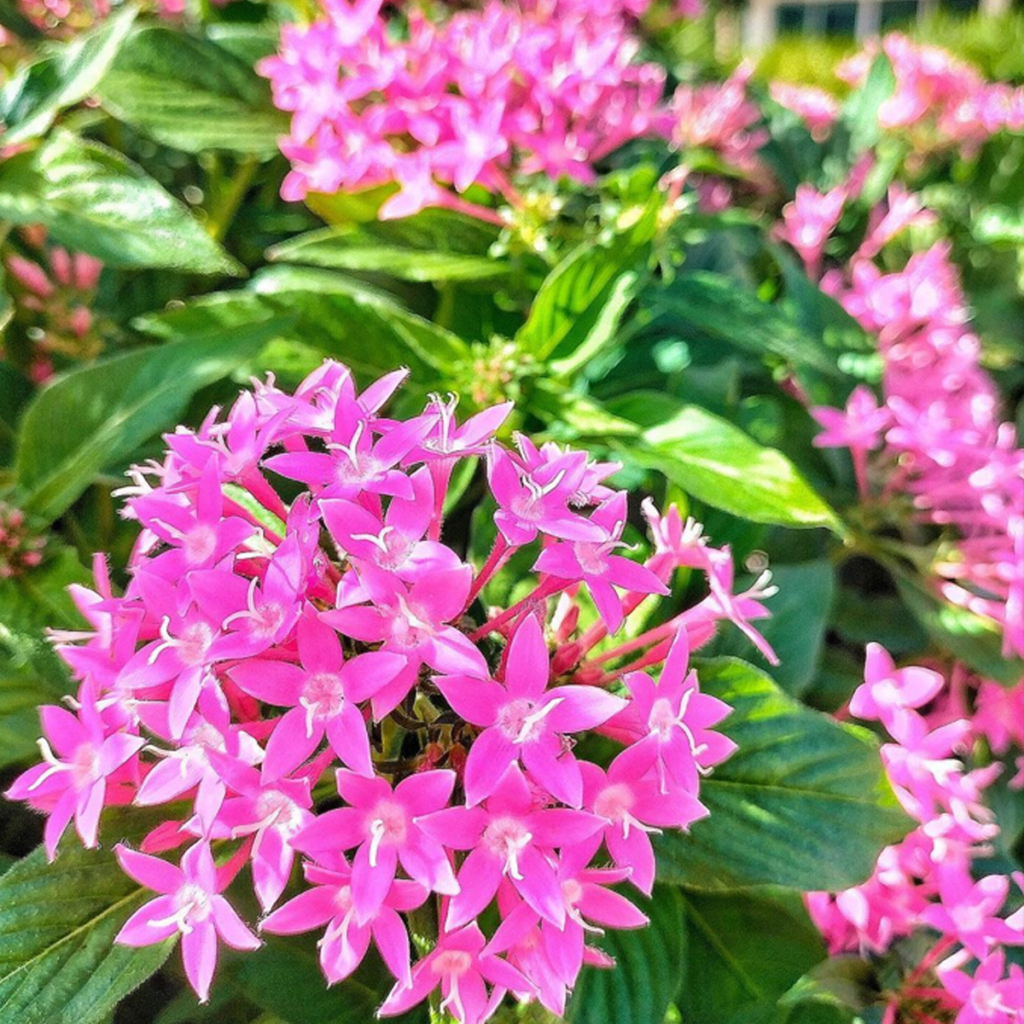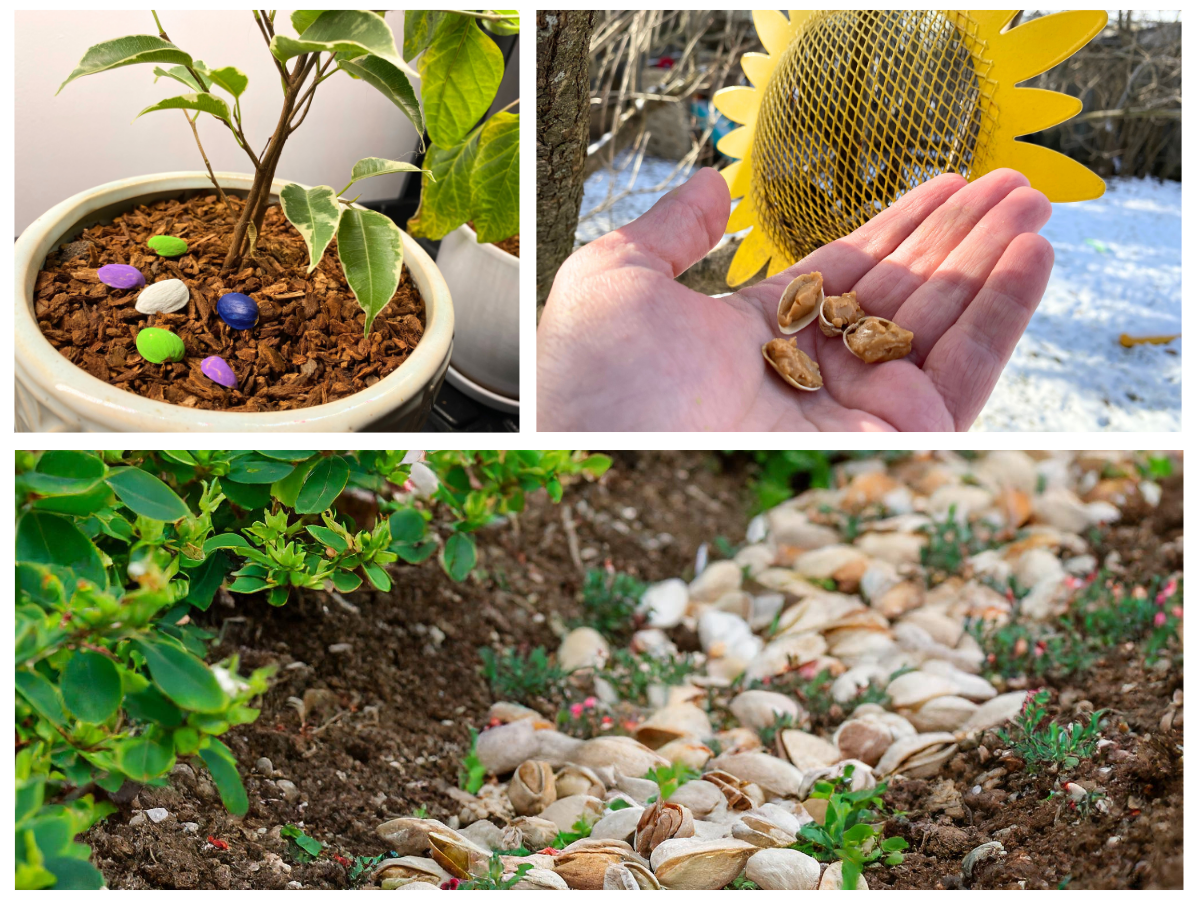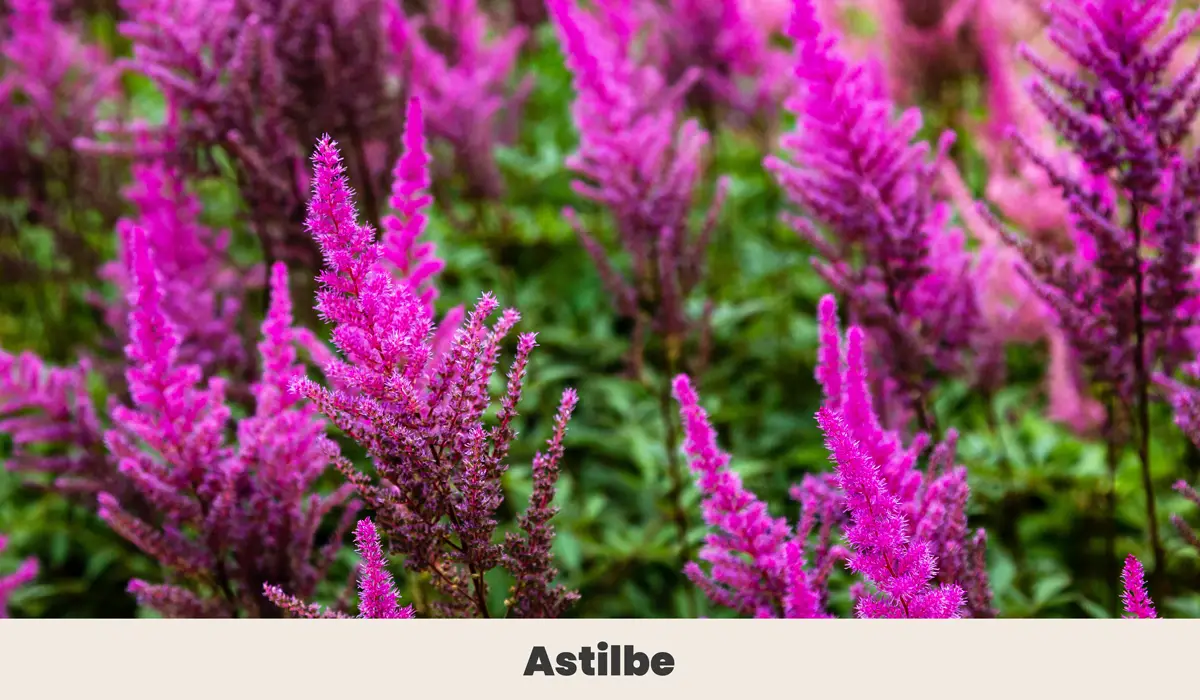12 Different Flowers That Look Like Daisies + Growing Guides

If you’re a fan of daisies, then you will love this article.
Everyone loves daisies because of their beautiful, delicate appearance and ability to grow in almost any environment. However, did you know that many different types of flowers look like daisies?

Below, I’ll explore 12 different flowers with similar features to daisies.
Whether you’re a flower enthusiast or just looking to expand your knowledge, discover some stunning flowers resembling the beloved daisy.
1. Perennial Sunflower (Helianthus annuus)

The perennial sunflower, a beautiful member of the Asteraceae family, is a native North American plant with large, bright yellow flowers that resemble the annual sunflower.
Its remarkable ability to persist year after year sets it apart from its annual counterpart. This impressive plant is a great addition to any garden and will brighten any landscape.
| Botanical Name: | Helianthus annuus |
| Growth Rate: | Fast |
| Native Range: | North America |
| Hardiness Zones | 4-9 |
| Exposure: | Full sun |
| Soil Needs: | Well-drained, loamy soil |
| Tolerate: | Drought, heat, and humidity |
| Fertilizing Needs: | It doesn’t require much fertilization but can benefit from a balanced fertilizer in early spring. |
| Pruning Needs: | Deadheading the spent blooms can encourage more flowers to bloom. In the fall, cutting back the plant to about 6 inches from the ground can help promote new growth in the spring. |
| Water Needs: | Regular watering is necessary during the growing season, but the plant can tolerate drought once established. |
2. American Daisy (Symphyotrichum lanceolatum)

Also known as the lance-leaved aster, the American daisy is a stunning herbaceous perennial that belongs to the Asteraceae family.
This beautiful plant is native to North America and is widely distributed throughout the continent, making it a familiar sight in many gardens and natural habitats.
The American daisy is known for its charming appearance, with delicate, daisy-like flowers in various colors, including blue, purple, and white.
| Botanical Name: | Symphyotrichum lanceolatum |
| Growth Rate: | Fast |
| Native Range: | North America |
| Hardiness Zones | 3-8 |
| Exposure: | Full sun to partial shade |
| Soil Needs: | Well-drained, fertile soil |
| Tolerate: | Drought, poor soil, and some pests and diseases |
| Fertilizing Needs: | It doesn’t require much fertilization but can benefit from a balanced fertilizer in early spring. |
| Pruning Needs: | Deadheading the spent blooms can encourage more flowers to bloom. In the fall, cutting back the plant to about 6 inches from the ground can help promote new growth in the spring. |
| Water Needs: | Regular watering is necessary during the growing season, but the plant can tolerate drought once established. |
3. Black-eyed Susan (Rudbeckia hirta)

The black-eyed Susan, is a beautiful wildflower native to North America.
This vibrant member of the Asteraceae family boasts bright yellow petals with a dark brown center, making it a popular choice for gardens and landscaping projects.
Butter daisies are known for their hardiness and resilience, making them a great choice for those looking for a low-maintenance, high-impact addition to their outdoor space.
| Botanical Name: | Rudbeckia hirta |
| Growth Rate: | Fast |
| Native Range: | North America |
| Hardiness Zones | 3-9 |
| Exposure: | Full sun to partial shade |
| Soil Needs: | Well-drained, loamy soil |
| Tolerate: | Drought, heat, and poor soil conditions |
| Fertilizing Needs: | It doesn’t require much fertilization but can benefit from a balanced fertilizer in early spring. |
| Pruning Needs: | Deadheading the spent blooms can encourage more flowers to bloom. In the fall, cutting back the plant to about 6 inches from the ground can help promote new growth in the spring. |
| Water Needs: | Regular watering is necessary during the growing season, but the plant can tolerate drought once established. |
4. Painted Daisy (Tanacetum coccineum)

The painted daisy is a stunning flowering perennial plant native to central and eastern Europe.
This beautiful member of the Asteraceae family produces striking pink, red, or white flowers with yellow centers that bloom in the late spring and early summer, creating a beautiful burst of color in any garden.
In addition to their visual appeal, painted daisies are known for their medicinal properties, making them popular among herbalists and natural health practitioners.
| Botanical Name: | Tanacetum coccineum |
| Growth Rate: | Moderate |
| Native Range: | Central and Eastern Europe |
| Hardiness Zones | 3-7 |
| Exposure: | Full sun |
| Soil Needs: | Well-drained, fertile soil |
| Tolerate: | Heat, drought, and poor soil conditions |
| Fertilizing Needs: | It doesn’t require much fertilization but can benefit from a balanced fertilizer in early spring. |
| Pruning Needs: | Deadheading the spent blooms can encourage more flowers to bloom. Cutting the plant back after it has bloomed can help maintain its shape. |
| Water Needs: | Regular watering is necessary during the growing season, but the plant can tolerate drought once established. |
5. Gerbera Daisy (Gerbera jamesonii)

The Gerbera daisy is a vibrant and popular flowering plant from South Africa. With its stunningly large and colorful flowers, it’s often used to add a pop of color to gardens and indoor spaces alike.
Gerbera daisies are known for their long blooming season, which typically lasts from early spring to late autumn. These beautiful flowers come in various colors, including pink, red, orange, yellow, and white.
| Botanical Name: | Gerbera jamesonii |
| Growth Rate: | Fast |
| Native Range: | South Africa |
| Hardiness Zones | 9-11 |
| Exposure: | Full sun to partial shade |
| Soil Needs: | Well-drained, fertile soil |
| Tolerate: | Heat, humidity, and some pests and diseases |
| Fertilizing Needs: | It requires regular fertilization throughout the growing season with a balanced fertilizer. |
| Pruning Needs: | Deadheading the spent blooms can encourage more flowers to bloom. Removing dead or damaged leaves can also help maintain the plant’s health. |
| Water Needs: | Regular watering is necessary, as the plant is not very drought tolerant. However, overwatering should be avoided as it can lead to root rot. |
6. Blanket Flower (Gaillardia x grandiflora)

The blanket flower is a popular and resilient perennial plant that belongs to the Asteraceae family. It’s native to North and South America and is known for its striking red and yellow flowers, which feature a unique central cone.
These hardy plants are often used in landscaping projects as they are low-maintenance and tolerant of hot, dry conditions. Blanket flowers are a great choice for those looking to add a splash of color to their outdoor space.
| Botanical Name: | Gaillardia x grandiflora |
| Growth Rate: | Fast |
| Native Range: | North and South America |
| Hardiness Zones | 3-10 |
| Exposure: | Full sun |
| Soil Needs: | Well-drained, fertile soil |
| Tolerate: | Drought, heat, and poor soil conditions |
| Fertilizing Needs: | It benefits from regular fertilization with a balanced fertilizer. |
| Pruning Needs: | Deadheading spent blooms can encourage more flowers to bloom. Cutting back the plant in the fall can help promote new growth in the spring. |
| Water Needs: | Regular watering is necessary during the growing season, but the plant can tolerate drought once established. |
7. African Daisies (Osteospermum x hybrida)

African Daisies, also known as Osteospermum x Hybrida, are beautiful flowering plants native to South Africa that have gained popularity worldwide.
These stunning plants produce vibrant daisy-like flowers in various colors, including purple, pink, white, and yellow.
African Daisies are a favorite among gardeners and flower enthusiasts alike due to their ability to thrive in various growing conditions, including full sun and partial shade.
| Botanical Name: | Osteospermum x hybrida |
| Growth Rate: | Moderate |
| Native Range: | South Africa |
| Hardiness Zones | 9-11 |
| Exposure: | Full sun |
| Soil Needs: | Well-drained, fertile soil |
| Tolerate: | Heat, drought, and poor soil conditions |
| Fertilizing Needs: | It benefits from regular fertilization with a balanced fertilizer. |
| Pruning Needs: | Deadheading spent blooms can encourage more flowers to bloom. Cutting back the plant after flowering can help maintain its shape. |
| Water Needs: | Regular watering is necessary during the growing season, but the plant can tolerate drought once established. |
8. Shasta Daisy (Leucanthemum x superbum)

Shasta Daisies are beloved perennials well-known for their large, bright white flowers with sunny yellow centers. These plants are part of the Asteraceae family and are native to Europe.
Shasta Daisies are a popular choice for gardens and landscaping due to their ability to attract pollinators such as bees and butterflies. They’re also a favorite among florists for floral arrangements and bouquets.
These daisies prefer full sun and well-draining soil but can tolerate some shade and are relatively easy to care for.
| Botanical Name: | Leucanthemum x superbum |
| Growth Rate: | Moderate |
| Native Range: | Europe |
| Hardiness Zones | 4-9 |
| Exposure: | Full sun to partial shade |
| Soil Needs: | Well-drained, fertile soil |
| Tolerate: | Heat, drought, and some pests and diseases |
| Fertilizing Needs: | It benefits from regular fertilization with a balanced fertilizer. |
| Pruning Needs: | Deadheading spent blooms can encourage more flowers to bloom. Cutting back the plant after flowering can help maintain its shape. |
| Water Needs: | Regular watering is necessary during the growing season, but the plant can tolerate drought once established. |
9. Annual Townsend Daisy (Townsendia)

The Annual Townsend Daisy, scientifically known as Townsendia, is a charming flowering plant native to North America.
These daisies produce delicate, small flowers reminiscent of daisies in shades of pink, white, and purple. They’re annual plants that require full sun and well-draining soil to thrive and can often be found in wildflower meadows or along roadsides.
Although they have a short lifespan, these daisies are a joy to behold while blooming.
| Botanical Name: | Townsendia |
| Growth Rate: | Moderate |
| Native Range: | North America |
| Hardiness Zones | N/A (it’s not hardy) |
| Exposure: | Full sun |
| Soil Needs: | Well-drained, sandy soil |
| Tolerate: | Drought and poor soil conditions |
| Fertilizing Needs: | It doesn’t require much fertilization but can benefit from a balanced fertilizer in early spring. |
| Pruning Needs: | Deadheading spent blooms can encourage more flowers to bloom. |
| Water Needs: | Regular watering is necessary during the growing season, but the plant can tolerate drought once established. |
10. Cape marigold (Arctotheca calendula)

The Cape marigold, also known as Arctotheca Calendula, is a vibrant plant from South Africa. Its bright yellow petals and fuzzy green leaves bring a cheerful and sunny disposition to any garden.
These daisies are tough and adaptable, capable of tolerating heat and drought easily. They’re perennials that can be propagated through seed or division, requiring well-draining soil and full sun to flourish.
The Cape marigold is also commonly used in herbal medicine due to its anti-inflammatory properties.
| Botanical Name: | Arctotheca calendula |
| Growth Rate: | Moderate |
| Native Range: | South Africa |
| Hardiness Zones | 9-11 |
| Exposure: | Full sun |
| Soil Needs: | Well-drained, sandy soil |
| Tolerate: | Drought, heat |
| Fertilizing Needs: | Moderate |
| Pruning Needs: | Deadheading to encourage blooming |
| Water Needs: | Low to moderate |
11. Golden Marguerite Daisy (Anthemis tinctoria)

The Golden Marguerite Daisy, also known as Anthemis Tinctoria, is a stunning flowering plant reminiscent of a burst of sunshine.
This daisy features bright yellow centers and delicate white petals and is native to Southern Europe. It’s a hardy plant that can easily withstand poor soil and drought conditions, making it a popular choice for gardens in hot and dry climates.
The Golden Marguerite Daisy is an attractive option for adding a pop of color to any garden, and its flowers also make great cut flowers for floral arrangements.
| Botanical Name: | Anthemis tinctoria |
| Growth Rate: | Moderate to fast |
| Native Range: | Southern Europe |
| Hardiness Zones | 3-9 |
| Exposure: | Full sun |
| Soil Needs: | Well-drained, average to poor soil |
| Tolerate: | Drought, heat, poor soil |
| Fertilizing Needs: | Low to moderate |
| Pruning Needs: | Deadheading to encourage blooming |
| Water Needs: | Low to moderate |
12. Blue Marguerite Daisies (Felicia amelloides)

The Blue Marguerite Daisy, or Felicia Amelloides, is a beautiful, dreamy sky-blue flowering plant that will surely capture your heart.
Originally from South Africa, this hardy plant is a low-maintenance garden with delicate petals and a bright yellow center. The Blue Marguerite Daisy will attract pollinators to your yard, making it an excellent choice for gardeners who want to promote biodiversity.
These daisies thrive in full sun and well-draining soil and are relatively easy to care for. They’re also perfect for container gardening or as border plants in garden beds.
| Botanical Name: | Felicia amelloides |
| Growth Rate: | Moderate to fast |
| Native Range: | South Africa |
| Hardiness Zones | 8-10 |
| Exposure: | Full sun |
| Soil Needs: | Well-drained, average to poor soil |
| Tolerate: | Drought, heat |
| Fertilizing Needs: | Low to moderate |
| Pruning Needs: | Deadheading to encourage blooming |
| Water Needs: | Low to moderate |
Final Thoughts
I hope that this article has helped you to discover new and beautiful flowers that share a resemblance to daisies.
Whether you’re looking to diversify your garden or appreciate different flowers, there’s a daisy-like flower for everyone.
So, the next time you come across a flower resembling a daisy, you can recognize and appreciate it.




